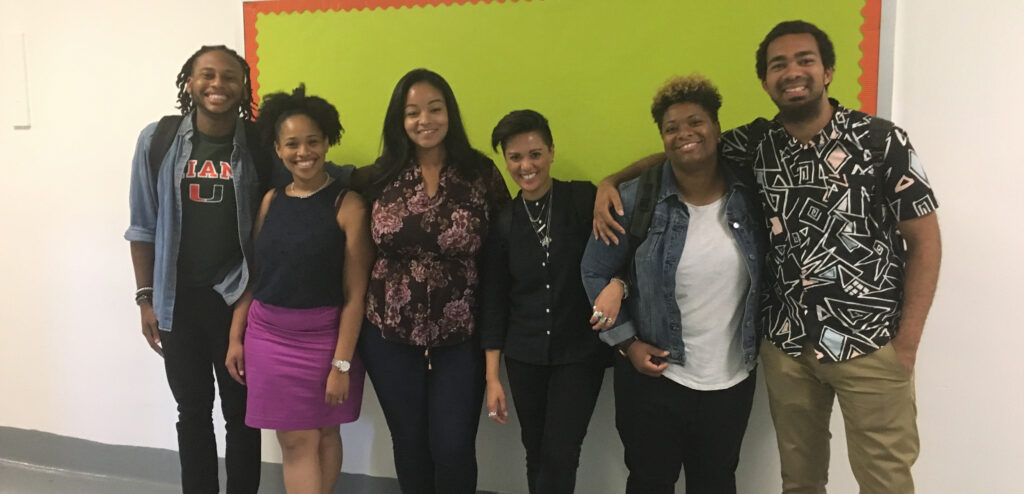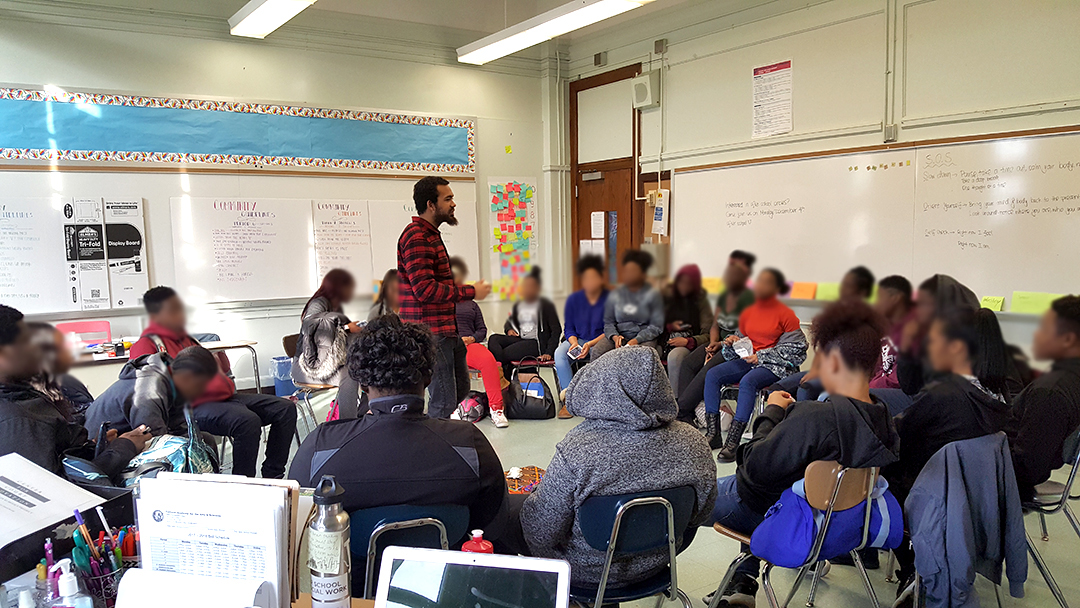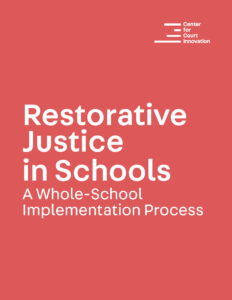We implemented restorative justice programs in five New York City high schools to strengthen relationships school-wide.
In New York City, there are often stark discrepancies in school suspension rates based on race, gender, and disability. In partnership with New York City’s Department of Education, our Restorative Justice in Schools project worked in five Brooklyn high schools with elevated suspension rates whose students overwhelmingly come from communities of color. Using restorative justice practices, the program worked with school staff and students to build relationships, to address conflicts, and to reduce exclusionary discipline.
Funded as a research project, the program operated for three years. Researchers from the Center for Court Innovation are now evaluating the initiative’s effectiveness through a randomized controlled trial, assessing whether it improved overall school climate and culture and reduced inequities. The report is expected to be released in 2021.
Resources
- Restorative Justice in Schools: A Whole-School Implementation Process – publication guide
- Restorative Justice is Racial Justice – New Thinking podcast
- Healing from Conflict: Restorative Approaches and a Path Forward for Justice – webinar
-
Students Win NPR Podcast Award: Climate Change is Racial Injustice – podcast
About the Program
The Center for Court Innovation’s approach to restorative justice seeks to promote individual responsibility and participation, repair harm, and build relationships. Center staff respond to the unique needs of each individual school, as well as to the context of the surrounding communities.
- Relationship-building circles within the school: Our staff worked to familiarize students with the circle process, helping students and teachers to develop empathy and engage with each other in a more meaningful way. Students practiced communication skills, as well as improved listening and focusing skills.
- Responding to harm: Our program offered circles as an alternative to suspension or other forms of exclusionary discipline for students in crisis, or for students returning to the school following a prolonged absence. Addressing harm or preparing for student reentry involved all members of the school community, including teachers and families.
- Investment & wrap around support: Our program offered resources and support to the school community, including individualized support for stakeholders through coaching, training, and professional development and assistance with the development of positive school culture and climate activities that foster a sense of belonging and pride in the school community.

Some of the members of our Restorative Justice in Schools team pause for a photo in the halls of Brooklyn’s Samuel J. Tilden High School Campus.

